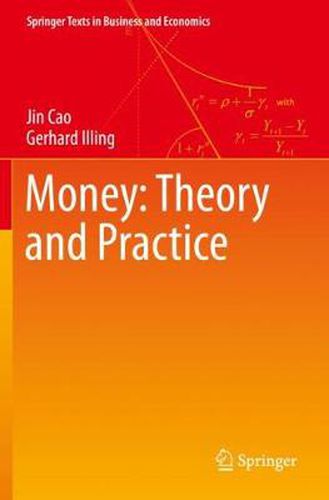Readings Newsletter
Become a Readings Member to make your shopping experience even easier.
Sign in or sign up for free!
You’re not far away from qualifying for FREE standard shipping within Australia
You’ve qualified for FREE standard shipping within Australia
The cart is loading…






This textbook provides an introduction to modern monetary economics for advanced undergraduates, highlighting the lessons learned from the recent financial crisis. The book presents both the core New Keynesian model and recent advances, taking into account financial frictions, and discusses recent research on an intuitive level based on simple static and two-period models, but also prepares readers for an extension to a truly dynamic analysis. Further, it offers a systematic perspective on monetary policy, covering a wide range of models to help readers gain a better understanding of controversial issues. Part I examines the long-run perspective, addressing classical monetary policy issues such as determination of the price level and interaction between monetary and fiscal policy. Part II introduces the core New Keynesian model, characterizing optimal monetary policy to stabilize short-term shocks. It discusses rules vs. discretion and the challenges arising from control errors, imperfect information and robustness issues. It also analyzes optimal control in the presence of an effective lower bound. Part III focuses on modelling financial frictions. It identifies the transmission mechanisms of monetary policy via banking and introduces models with incomplete markets, principal-agent problems, maturity mismatch and leverage cycles, to show why investors’ and intermediaries’ own stakes play a key role in lending with pro-cyclical features. In addition, it presents a tractable model for handling liquidity management and demonstrates that the need to sell assets in crisis amplifies the volatility of the real economy. Lastly, the book discusses the relation between monetary policy and financial stability, addressing systemic risk and the role of macro-prudential regulation.
$9.00 standard shipping within Australia
FREE standard shipping within Australia for orders over $100.00
Express & International shipping calculated at checkout
This textbook provides an introduction to modern monetary economics for advanced undergraduates, highlighting the lessons learned from the recent financial crisis. The book presents both the core New Keynesian model and recent advances, taking into account financial frictions, and discusses recent research on an intuitive level based on simple static and two-period models, but also prepares readers for an extension to a truly dynamic analysis. Further, it offers a systematic perspective on monetary policy, covering a wide range of models to help readers gain a better understanding of controversial issues. Part I examines the long-run perspective, addressing classical monetary policy issues such as determination of the price level and interaction between monetary and fiscal policy. Part II introduces the core New Keynesian model, characterizing optimal monetary policy to stabilize short-term shocks. It discusses rules vs. discretion and the challenges arising from control errors, imperfect information and robustness issues. It also analyzes optimal control in the presence of an effective lower bound. Part III focuses on modelling financial frictions. It identifies the transmission mechanisms of monetary policy via banking and introduces models with incomplete markets, principal-agent problems, maturity mismatch and leverage cycles, to show why investors’ and intermediaries’ own stakes play a key role in lending with pro-cyclical features. In addition, it presents a tractable model for handling liquidity management and demonstrates that the need to sell assets in crisis amplifies the volatility of the real economy. Lastly, the book discusses the relation between monetary policy and financial stability, addressing systemic risk and the role of macro-prudential regulation.